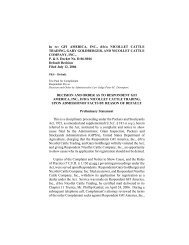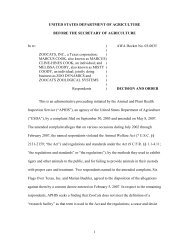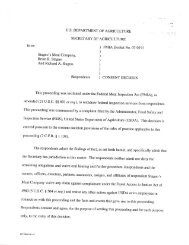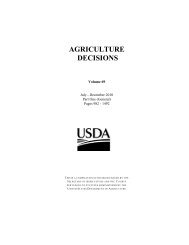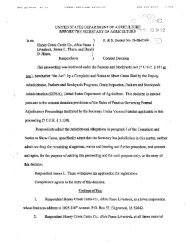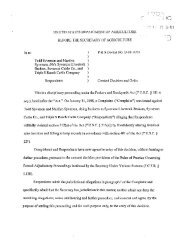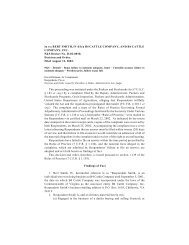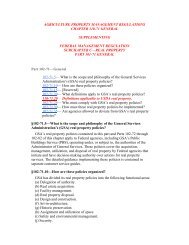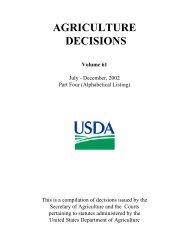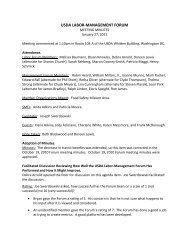Green Information Technology Strategic Plan - Departmental ...
Green Information Technology Strategic Plan - Departmental ...
Green Information Technology Strategic Plan - Departmental ...
Create successful ePaper yourself
Turn your PDF publications into a flip-book with our unique Google optimized e-Paper software.
CO 2 emissions in tons fig. 16<br />
NOTE:<br />
The Agency uses four general ledger and five payment modules to support the farm payments system.<br />
The carbon reduction found in these modules is documented on the Data Center Consolidation,<br />
Application Consolidation, and ERP section of this plan.<br />
—Paperwork<br />
Current systems and processes require manual paper<br />
applications, contracts and reporting for the majority of<br />
the programs. It is estimated that the average number of<br />
paper pages created by FSA for producers to apply, qualify,<br />
contract, and report for the programs is 60 pages per year<br />
per producer. An average of 1.5 million producers received<br />
payments or benefits from FSA during FY2004 and FY2007.<br />
Therefore, 110 million pieces of paper or 221,000 reams of<br />
paper were consumed annually during FY 2004 through<br />
2007 5 .<br />
FSA annual costs associated with purchasing 221,000 reams<br />
of paper are estimated to be $552,500 vi . In terms of the<br />
carbon dioxide attributable to the consumption of paper<br />
due to the large number of manually processes required<br />
by the farm programs and the legacy system’s inability to<br />
provide Internet capabilities, such as online application and<br />
eligibility processes, etc., FSA estimates 1,570 tons in carbon<br />
emissions annually.<br />
The paper cost does not include the required storage of the<br />
paper to meet the Federal document retention regulations<br />
or the transportation of documents to a storage facility. By<br />
allowing producers to submit program application forms<br />
6,800<br />
6,600<br />
6,400<br />
6,200<br />
6,000<br />
5,800<br />
5,600<br />
5,400<br />
5,200<br />
5,000<br />
74<br />
CO 2 Emission – Hosting<br />
6,680<br />
6,479<br />
6,280<br />
and/or other required documents electronically, accepting<br />
electronic or digital signatures, and storing files electronically,<br />
FSA will reduce the carbon footprint, conserve energy and<br />
provide greater benefits to customers and society as whole.<br />
—Producer’s Travel<br />
On average most customers make 4 trips to the local county<br />
office to conduct business with FSA vii . During these visits<br />
producers normally submit and sign annual program<br />
requirement documents, such as acreage reports, and/or<br />
complete various farm program applications for benefit or<br />
services throughout the applicable crop year.<br />
FSA estimates that a producer’s average miles traveled per<br />
visit is 36 miles round trip to the local County Office. Based<br />
on 18 miles per gallon for the producer’s transportation viii at<br />
$3.60 per gallon of fuel (based on October 2008 prices), the<br />
total estimated cost of all the annual trips by the 1.5 million<br />
producers is $47 million; generating an estimated 113,025<br />
tons of carbon dioxide. As a rough estimate, using an hourly<br />
wage for a producer at $16.04 per hour at two hours per visit<br />
in travel and time; with 1.5 million producers the value of<br />
the producer’s cost for 4 visits is an estimated $192.4 million<br />
per year.<br />
2008 2009 2010 2011 2012 2013<br />
6,078<br />
5,878<br />
5,678<br />
<strong>Green</strong> <strong>Information</strong> <strong>Technology</strong> <strong>Strategic</strong> <strong>Plan</strong>




